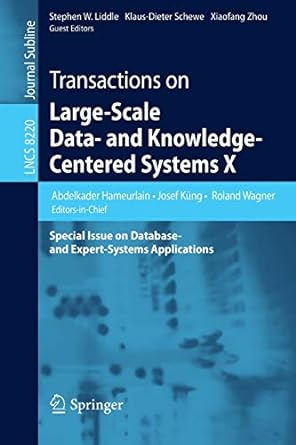
2. Calling Convention and Stack a) List the registers in ARM architecture used for the following: program counter link register stack pointer arguments passed to a function return values from a function b) Let us consider the following function that takes six parameters. The line number is shown on the left side. Assume ARM's calling convention. 1: int func(int il, int i2, int i3, int i4, int i5, int i6) { int add12, mul34, div56; add12 = il + i2; mul34 = i3 * i 4; div56 = i5 / i6; return (add12 + mul34 + div56); 9: 12: } Given the initial state for registers (RO-R6) and the stack at the beginning of the function shown below, draw the stack right after the execution of Line 7. Assume that the function allocates space for each local variable in the stack. The value of each local variable will be stored in the stack. Assume that addi2 is allocated at a higher memory address and div56 is allocated at a lower address. Register Value High Address RO RI 3 SP R2 R3 R4 R5 R6 128 1024 Low Address What will be the value of registers RO to R6 at the end of the function? Assume that the function does not change the registers holding input parameters except for returning the result at the end. R4, R5, and R6 are used as temporary registers and hold values for add12, mul34, and div56 when calculating the return value. 2. Calling Convention and Stack a) List the registers in ARM architecture used for the following: program counter link register stack pointer arguments passed to a function return values from a function b) Let us consider the following function that takes six parameters. The line number is shown on the left side. Assume ARM's calling convention. 1: int func(int il, int i2, int i3, int i4, int i5, int i6) { int add12, mul34, div56; add12 = il + i2; mul34 = i3 * i 4; div56 = i5 / i6; return (add12 + mul34 + div56); 9: 12: } Given the initial state for registers (RO-R6) and the stack at the beginning of the function shown below, draw the stack right after the execution of Line 7. Assume that the function allocates space for each local variable in the stack. The value of each local variable will be stored in the stack. Assume that addi2 is allocated at a higher memory address and div56 is allocated at a lower address. Register Value High Address RO RI 3 SP R2 R3 R4 R5 R6 128 1024 Low Address What will be the value of registers RO to R6 at the end of the function? Assume that the function does not change the registers holding input parameters except for returning the result at the end. R4, R5, and R6 are used as temporary registers and hold values for add12, mul34, and div56 when calculating the return value







